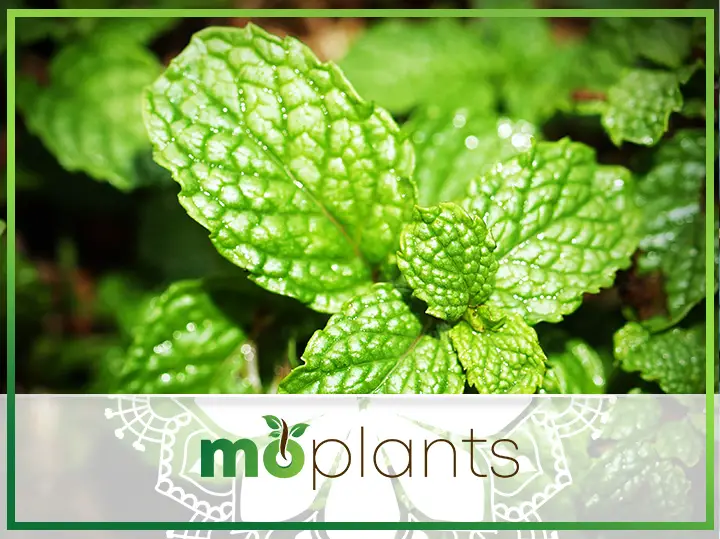Mint is a hardy plant. Whether growing in a planter, indoors, or outdoors in your garden, it will likely grow quite vigorously. It is a hardy plant that doesn’t need much attention to flourish.
Mint leaves are not only good for flavoring recipes, but they also keep insects away from your garden. They tend to survive well even in poor soil conditions and can grow vigorously if left unattended.
However, sometimes mint can have problems that cause its leaves to turn black or brown, which affects the appearance of your plant and also impacts the flavor of its leaves. The problem can be exacerbated if you’re growing mint just for culinary purposes; this is why it’s crucial to understand what causes browning on mint leaves and how to prevent it from happening again!
What Causes Mint Leaves To Turn Black?
Mint leaves are gorgeous. With brilliant shades ranging from green to purple, mint is one of our favorite plants in our herb garden. It smells great too. One of the best ways to use mint is for homemade herbal tea by adding a handful of fresh leaves to your hot or cold water or milk. Mint leaves can turn black (or brown) for many reasons.
Mint is a shade-loving plant and does not like direct sunlight. The most common reason is that the mint was exposed to too much light. If you live in an area where you get a lot of sun, consider growing your mint plants under a shade cloth or in pots with some sort of lid. If your leaves are already turning black, try moving your plant into a more shady location.
Another common cause of blackening mint leaves is overwatering. Mint likes to be kept moist but must be allowed to dry out between watering sessions. If you’re seeing black spots on your mint leaves, they’ve likely been sitting in water for too long and need to be watered again.
Read on to learn more about what causes mint leaves to turn black.
Overwatering & Drainage Problems
Overwatering is a common cause of leaf discoloration. Check that your mints are getting enough drainage by ensuring their pots have holes in the bottom and that you aren’t drowning them with excess water. If you’re still having problems, try adding gravel to the bottom of the pot to improve drainage.
In addition to overwatering, under-drainage can also lead to discolored leaves. Make sure there is plenty of room for water to drain around your plants’ roots before watering them again. This is especially true for plants kept on saucers or in deep pots that hold more than an inch or two worth of water at any given time.
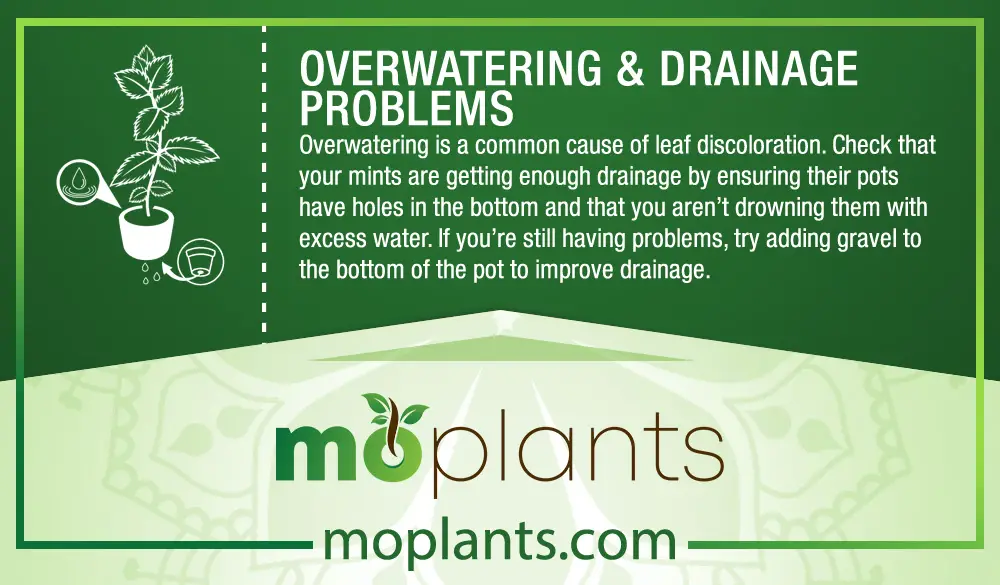
Underwatering Your Mint Plant
Mint plants are sensitive to water, and over-watering can be as harmful as underwatering. The best way to know if your mint plant needs water is to check the soil with your finger. If it’s damp an inch below the surface, you don’t need water. If it feels dry at a depth of an inch, give it a good watering but be careful not to overwater.
If you want fresh mint leaves but don’t have time for harvesting right away, try hanging up a bunch of clean sprigs in your refrigerator to stay fresh longer (the moisture helps keep them supple). You can also put them in jars or glasses filled with water—just make sure there’s enough room around each sprig so that air bubbles up through any holes in the leaves rather than being trapped against them.
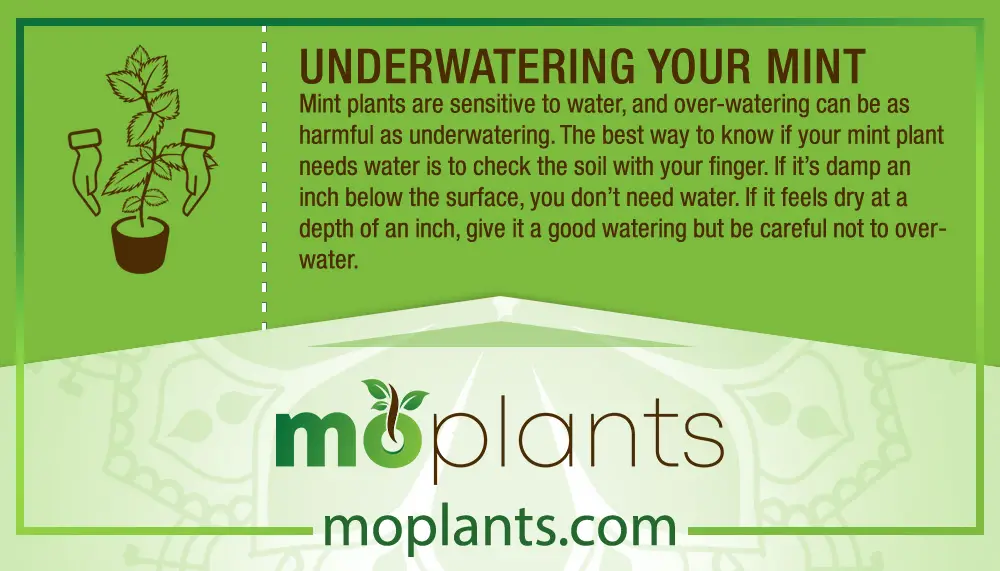
Too Much Fertilizer
If you’re finding that your mint leaves are turning black, one of the most common causes is overfertilizing. When we fertilize plants, it helps them grow and develop. However, too much fertilizer can cause nutrients to build up in the soil around your plant’s roots and burn them out. This results in browning and rotting of the roots, which leads to a lack of water absorption for optimal growth—and ultimately wilted leaves on your plant.
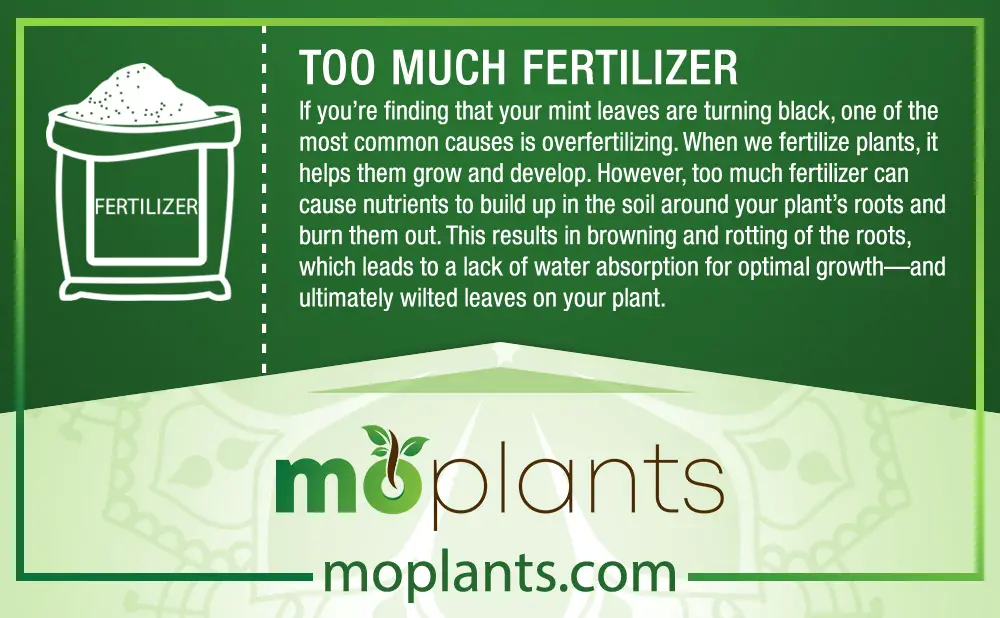
Rootbound Mint Plants
Rootbound mint plants are a common problem. The roots have grown so much that they fill the container and block air and water flow. This can lead to problems such as stunted growth and wilting.
To fix this problem, you must repot your plant into a larger container with drainage holes at the bottom. The new container should be at least 3 times the size of your root ball (the amount of roots left over after separating them from the top part). In addition, make sure it has good soil with compost or organic matter for nutrients.
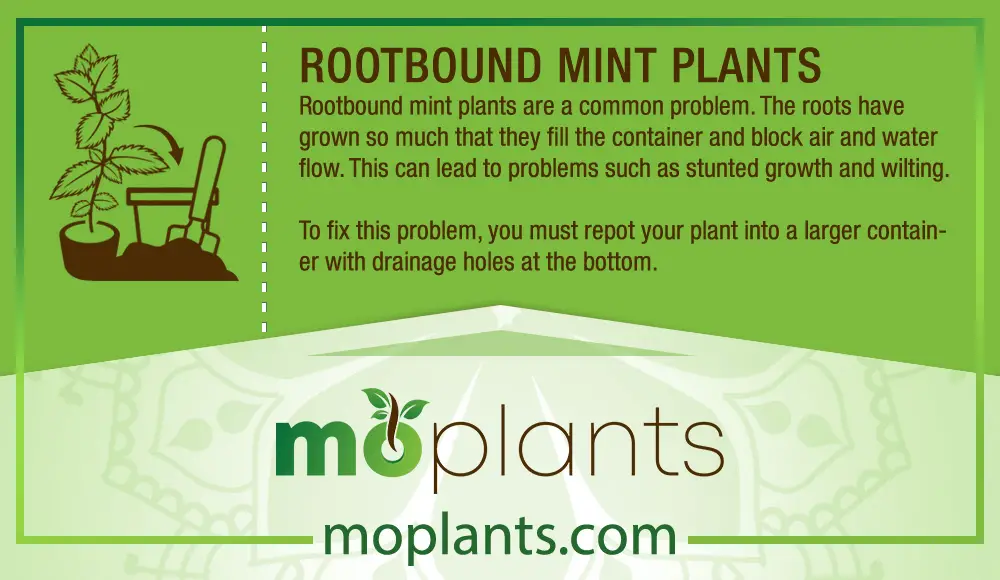
Sun & Temperature Issues
Mint leaves turning black can be caused by sun exposure, which is why mint is a sun-loving plant. If you keep your mint in full sun it will thrive and produce more leaves, but if you have it in partial shade or indoors it may turn black. Mint likes temperatures in the 70s, so bringing yours inside during cooler months (or placing it too close to a heat source) could also cause leaf discoloration.
Mint is a tropical plant and won’t tolerate cold temperatures well. If your mint has been subjected to freezing temperatures, then not only will the leaves turn black but they’ll die off as well.
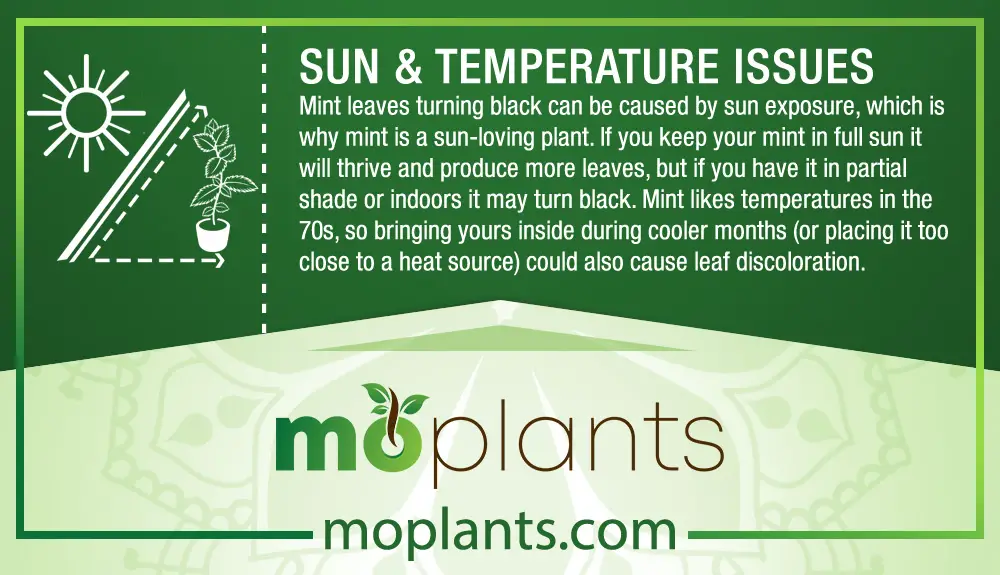
Fungal Diseases
Fungal diseases are a common problem in mint plants. The most common type of fungal disease is caused by a variety of fungi, including:
- Fusarium oxysporum or Fusarium wilt
- Verticillium dahliae or Verticillium wilt
These diseases can be treated with fungicides.
Fungal diseases are usually caused by one or more types of fungus. These fungi can infect mint leaves and cause them to turn black. Fungi do not attack live plants, but they do thrive in dead or decaying matter. They will often attack the roots and stems of a plant before moving on to the leaves. Fungal infections usually begin as small brown spots or lesions on the plant’s surface, but they can grow into larger patches that cover large areas of a plant’s leaf surface.
Mint is susceptible to fungal diseases such as powdery mildew, which causes white powdery patches on the leaves; rusts and smuts, which cause brownish spores; leaf spots and blights; damping-off disease; and root rot.
The best way to prevent fungal infections in mint is by keeping your garden free of debris — especially mulch — which can harbor fungus spores that splash up onto your mint plant’s foliage and stems when you water it or if rain falls directly onto your garden bedding area.
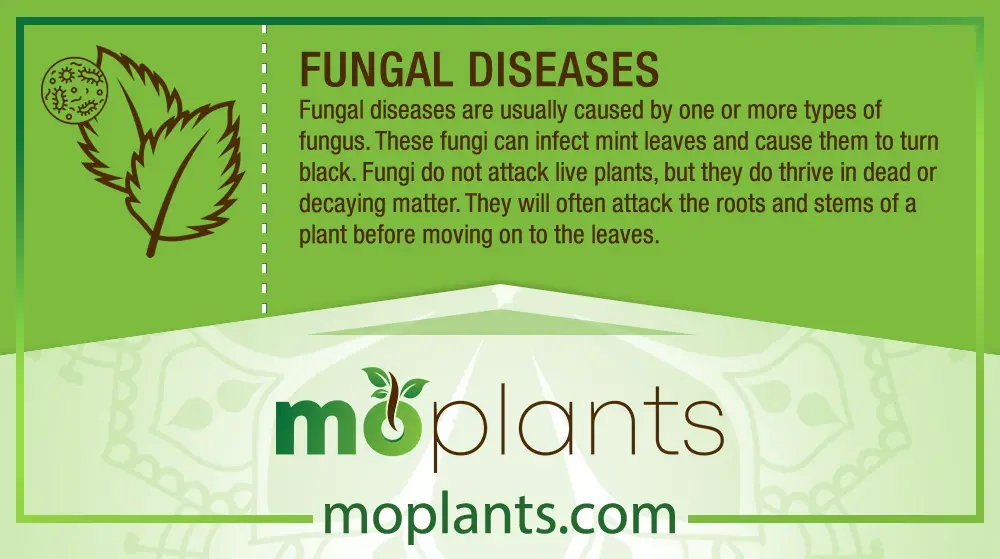
Pests
Mint pests include aphids, spider mites, whiteflies, and thrips. These pests can be controlled with insecticidal soap, neem oil, or horticultural oil. Organic pesticides include pyrethrum or rotenone-based products that are mixed with water and sprayed on the plants as a foliar application to kill insects. Natural predators like ladybugs and lacewings can also help control these pests by eating them as they move around your mint plant.
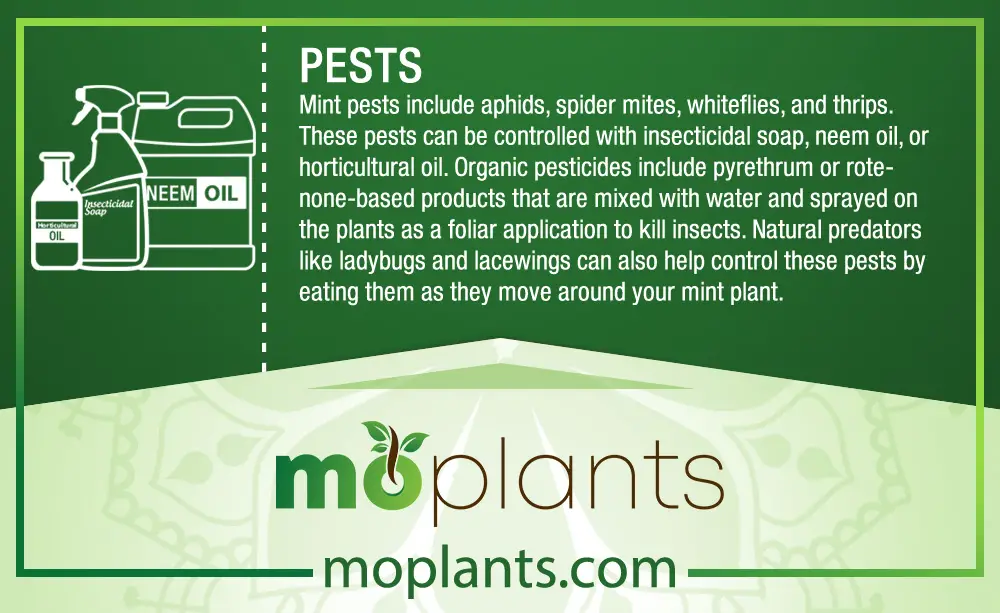
Infographic
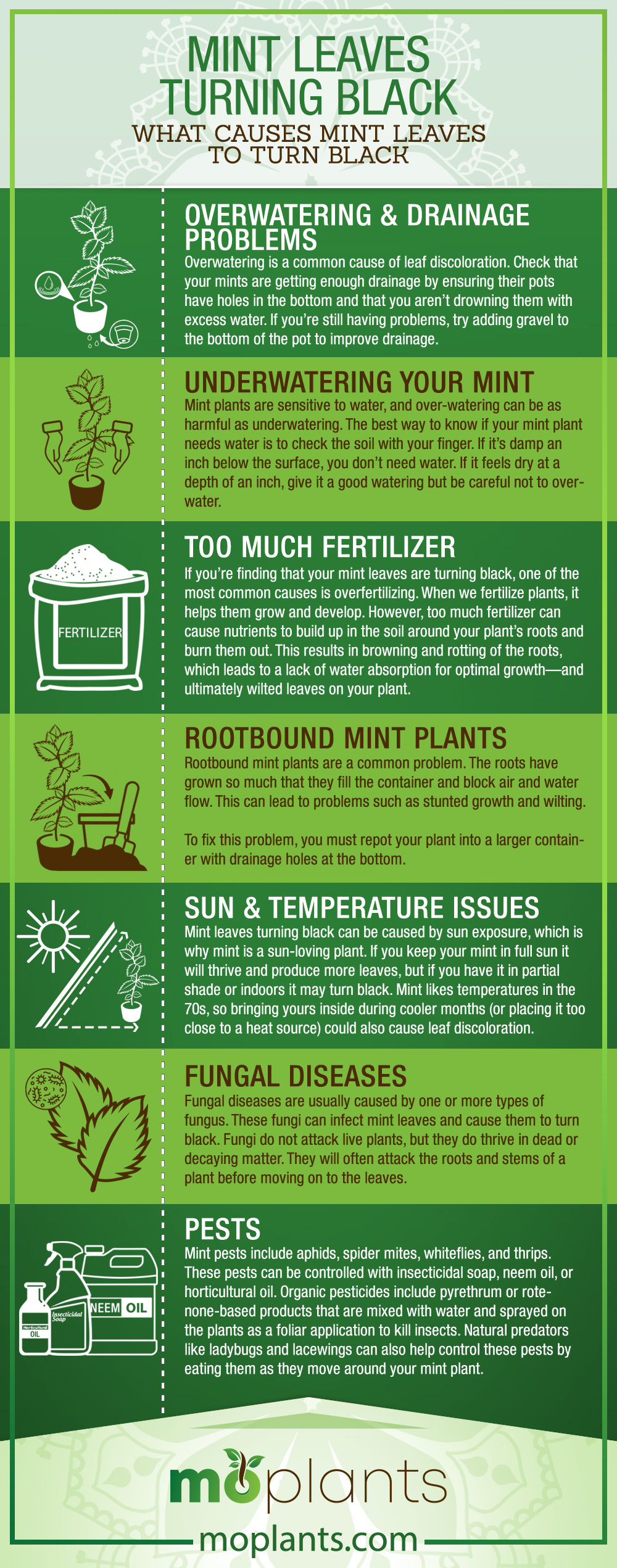
Can I Eat Mint Leaves That Are Turning Black?
Yes, you can eat mint leaves turning black.
You might be thinking that the leaves are no longer fit to eat. But it’s actually pretty safe if they’re not slimy or decayed and you don’t have an allergy to them.
As long as they look healthy, you can use them in recipes like mint pesto or stir-fries with other ingredients (like spinach and cabbage). You could also add them to your morning smoothie—they’ll taste bitter but still provide plenty of vitamin C.
Few Tips On How To Protect Your Mint Plant
Mint is a perennial herb that can grow up to 3 feet. It is a common ingredient in many dishes, such as salads and sandwiches. If you want to grow mint in your backyard, it is important to know how to protect it from pests. Here are some tips on how to protect your mint plant:
- Give your mint a proper water supply. This plant likes to be watered regularly, and they need to be kept moist at all times. They don’t like to dry out, so be sure to check on them and water them if they seem thirsty.
- Make sure the soil is moist but not too wet, or else the roots could rot and die off. If you have a lot of rain in your area, it’s best to let the soil dry out between watering sessions so it doesn’t stay soggy for too long. This will help prevent root rot from occurring as well as keep your mint from becoming too waterlogged or drowning in its own soil.
- Plant the mint in a sunny area that gets at least 6 hours of sunlight every day
- Make sure that the soil where you plant your mint is well-drained and has a pH level of 6-7.5
- Water your mint plant regularly during dry weather but make sure not to overwater it since this will lead to root rot.
- Make sure that the pot has enough drainage holes; these should allow excess water to flow out of the pot through them without allowing any air pockets (which can lead to root rot). If you’re unsure whether or not your pot has enough drainage holes, just test by filling it up with water and then see if all of it drains out within 24 hours (if not, add more holes).
- Mint plants need regular pruning. Prune them once every month during the growing season (March through October) by cutting off any new growth or branches that are no longer needed so that they do not become weak or damaged due to the lack of nutrients being distributed. As a result of trimming, your mint bush will maintain its healthy-looking shape. If you don’t have time for this task regularly, then wait until fall, when most of the growth has slowed down significantly before doing this chore every year.
- If your mint plants are getting too big and taking over your garden, cut them back to about 4 inches above ground level in early spring before new growth begins. When you do this, be sure to leave some of the stems intact so that you have enough energy stores left for new growth when it comes time for it.
Takeaway
Mint is a great way to add flavor to your food along with a nice aroma. With the ability to be grown widely, they’re an essential seasoning in any kitchen. While they may be a joy to have in your home interior, they can take a toll on your budget.
Mint leaves turning black is an indication that the plant is either under stress or dead. Thus, it is important that you give this herb the proper amount of water and light it needs to thrive. In order to prevent your mint leaves from turning black, avoid giving them too much sun. If you want to grow this herb indoors, then place it in a bright area but don’t place it under direct sunlight.
If you find that your mint leaves are turning black, it’s a good idea to check the soil and see if there is any sign of excess moisture. You should also try to remove any infected plants from the garden so as not to spread the problem further. We hope that this has been helpful for anyone who finds themselves with mint leaves turning black and wondering what is causing this.

